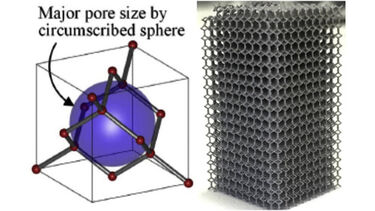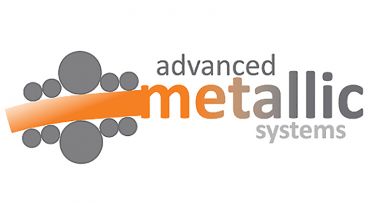Evaluation of autoencoders to detect process-related faults in the laser powder bed fusion of Ti-6Al-4V lattice structures.
Researcher John Power has worked with I-Form and Irish Manufacturing Research to evaluate the capability of machine learning to automatically detect faults during additive manufacturing of complex parts

Laser Powder Bed Fusion (L-PBF) is an additive manufacturing technique that fabricates metal parts layer-by-layer. It is a popular manufacturing technique commonly employed to print semi-porous lattice structures for biomedical implants, which are lightweight due to the reduced material used, but still display strong mechanical properties, making them useful for biomedical implants. Despite this, concerns around the consistency of parts produced are significant, and post-build quality control is often required. Process monitoring techniques combined with trained machine learning offer a potential solution to the consistency problem by allowing for defect detection as they occur in real-time and reduce the cost and time needed for post-build quality control.
In-situ process monitoring during L-PBF has been proposed to circumvent these limitations. This approach involves collecting data related to the laser meltpool and powder layer behaviour as the part is being built. Implementing real-time sensors and imaging technologies allows for monitoring each layer's quality. However, the sheer volume of data generated poses a significant challenge for manual analysis.
Machine learning presents a solution through automatic analysis of the collected data for inconsistencies indicative of defects. This study introduced controlled defects into lattice structures, and the laser meltpool's infrared emissions were collected using a photodiode. This data was used to train an autoencoder (a neural network designed to reconstruct its input data while minimising the difference between the original and reconstructed data).
The autoencoder demonstrated a promising ability to detect faults, achieving an F1 score of 0.73, indicating a balanced precision and recall. Future work will evaluate the model's generalisability by testing it on lattice structures with various dimensions and cell types. This approach represents a significant step towards real-time quality assurance in additive manufacturing, allowing for reduced waste and improved part reliability.
The integration of in-situ process monitoring and machine learning, mainly through the use of autoencoders in L-PBF manufacturing, has the potential to impact various industries in several ways significantly:
- Enhanced Quality Control: By enabling real-time detection of defects during manufacturing, industries can achieve higher quality and consistency in the parts produced. This reduces the risk of part failure in critical applications, such as aerospace, automotive, and medical devices, thereby increasing reliability and safety.
- Cost Reduction: Traditional post-build quality assessment methods are often expensive and time-consuming, involving destructive testing that results in waste. In-situ monitoring reduces the need for these tests, saving material costs and reducing waste. Early detection of defects also means less energy and material are spent on manufacturing defective parts, further driving down costs.
- Sustainability: This approach contributes to more sustainable manufacturing practices by reducing waste and improving the efficiency of material use. It aligns with the growing industry demand for more environmentally friendly production methods.
Combined, these impacts could lead to the wider adoption of L-PBF in industries, making way for innovative designs and sustainable practices.
Having the opportunity to work with an advanced manufacturing technique like L-PBF has been richly rewarding and also exciting. I've enjoyed working on the technical aspects of this project as well as having the opportunity to meet and collaborate with new people thanks to being a member of the I-Form Advanced Manufacturing Research Centre and the Advanced Metallic Systems Centre for Doctoral Training.
John Power
John Power is a PhD researcher with the Advanced Metallic Systems Centre for Doctoral Training, based at I-Form Centre for Advanced Manufacturing Research in University College Dublin (UCD) and sponsored by Stryker European Operations Limited. His PhD is focused on 'In-situ process monitoring of laser powder bed fusion process' and its use in fault detection and part characterisation for Ti-6Al-4V alloy. He obtained his undergraduate and master's degree in Mechanical Engineering from Trinity College Dublin. He received first-class honours in both degrees. He has also contributed to several publications in well-reputed journals and participated in international conferences.
Equipment used:
Renishaw RenAM 500 LPBF (Irish Manufacturing Research, Mullingar, Ireland)

Study with us
Study for a fully-funded PhD or EngD in Advanced Metallic Systems to explore innovative materials and manufacturing routes to increase sustainability and performance.

